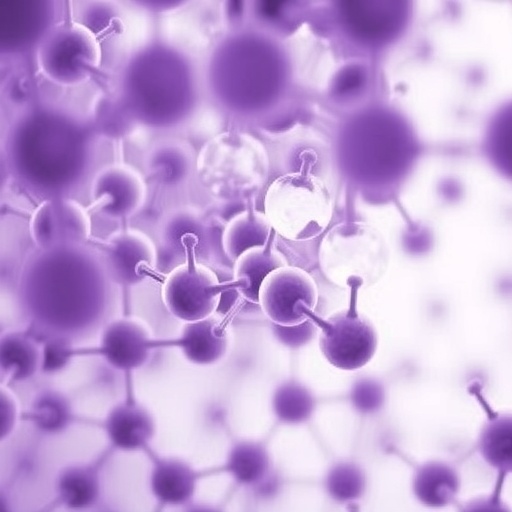Adolescent Hyperandrogenism: Unraveling Diagnostic Complexities and Therapeutic Innovations
In recent years, the medical community has increasingly turned its focus toward adolescent hyperandrogenism—a multifaceted endocrine disorder marked by elevated androgen levels in young females. Manifesting commonly with symptoms such as irregular menstruation, excessive acne, hirsutism, and even early signs of metabolic disturbances, hyperandrogenism in adolescents presents a challenging confluence of diagnostic ambiguity and therapeutic complexity. Recent comprehensive analyses have shed light on the underlying hormonal imbalances and opened avenues for more targeted and individualized treatment strategies, underscoring the urgency for enhanced clinical awareness and innovative therapeutic frameworks.
The fundamental pathophysiology involves the excessive production or activity of androgens, primarily testosterone and related hormones, which deviates from normal physiological levels found in adolescent girls. This hormonal surge impacts multiple organ systems, principally the ovaries and adrenal glands, but also manifests systemically, influencing metabolic and psychological health. Crucially, the etiology of hyperandrogenism in adolescents is heterogeneous, encompassing polycystic ovary syndrome (PCOS), late-onset congenital adrenal hyperplasia (CAH), androgen-secreting tumors, and idiopathic forms, each necessitating distinct diagnostic criteria and therapeutic considerations.
One of the core challenges in diagnosing adolescent hyperandrogenism derives from the overlap between normal pubertal changes and pathologic androgen excess. Puberty inherently involves transient increases in androgen levels and physiological hirsutism, complicating the differentiation between normal development and pathology. Therefore, clinicians must employ a nuanced interpretation of clinical signs in conjunction with precise biochemical assays. Measurement of serum total and free testosterone, dehydroepiandrosterone sulfate (DHEAS), androstenedione, and 17-hydroxyprogesterone levels is imperative, with dynamic testing often required to exclude rare but critical conditions such as non-classic CAH or neoplasms.
Imaging modalities have advanced to become indispensable adjuncts in evaluation protocols. Pelvic ultrasonography facilitates the identification of polycystic ovarian morphology, a hallmark in many cases of PCOS, yet imaging findings alone cannot confirm diagnosis due to the high prevalence of polycystic-appearing ovaries in healthy adolescents. Furthermore, adrenal imaging via MRI or CT scans is reserved for suspicion of adrenal tumors or hyperplasia when hormonal assays suggest adrenal source hyperandrogenism. The integration of clinical, biochemical, and imaging data, combined with patient history, forms the cornerstone of a comprehensive assessment algorithm.
Highlighting the clinical spectrum, hyperandrogenism has been linked with significant comorbidities including insulin resistance, obesity, and dyslipidemia, raising concerns about long-term cardiometabolic risks. Research elucidates that androgens modulate adipocyte function and insulin signaling pathways, contributing to a pro-inflammatory and insulin-resistant state. These metabolic disturbances exacerbate reproductive abnormalities and vice versa, creating a vicious cycle that complicates both diagnosis and management. This interconnectedness demands a holistic approach that encompasses metabolic parameters alongside reproductive evaluation.
Therapeutically, the primary objective remains normalization of androgen levels and amelioration of symptoms, tailored to the underlying etiology and individual patient risk profiles. Lifestyle interventions addressing weight management and physical activity represent first-line strategies, particularly in obese adolescents, where insulin sensitizers such as metformin have demonstrated efficacy in mitigating hyperandrogenism and restoring ovulatory function. Pharmacological options include combined oral contraceptives, which reduce ovarian androgen production and counteract endometrial hyperplasia risk, as well as anti-androgens, reserved for severe hirsutism or acne unresponsive to conventional therapies.
Emerging hormone modulators and metabolic agents offer promising avenues for future management paradigms. Novel compounds targeting androgen receptors or enzymes involved in steroidogenesis are under investigation, potentially allowing for more selective suppression of androgen excess with fewer systemic side effects. Additionally, understanding the genetic and epigenetic determinants of hyperandrogenism may pave the way for personalized medicine applications, whereby therapy is customized based on molecular profiling, improving efficacy and patient compliance.
Psychological impact represents an often-overlooked dimension of adolescent hyperandrogenism. The visible manifestations such as hirsutism and acne bear significant psychosocial consequences including diminished self-esteem, anxiety, and depression. Integrative care models advocate for inclusion of mental health professionals in the management team, ensuring early identification of psychological distress and provision of appropriate supportive interventions. This holistic approach is vital in adolescent patients, given the formative nature of this developmental stage.
Importantly, challenges persist in standardizing diagnostic criteria specific to adolescence. Many existing frameworks derive from adult populations and fail to accommodate pubertal physiological variations and ethnic diversity in clinical presentations. International consensus efforts aim to refine definitions and establish age-appropriate thresholds for hormonal measurements and symptom severity, fostering uniformity in clinical practice and research cohorts. Such standardization is crucial to improve diagnostic accuracy and comparability across studies.
The economic burden of adolescent hyperandrogenism, driven by chronicity of symptoms, follow-up requirements, and comorbidities, calls for efficient resource allocation and health policy adjustments. Early detection and intervention can mitigate progression and reduce long-term sequelae, underscoring the need for educational campaigns targeted at primary care providers and pediatricians. Integration of multidisciplinary clinics specializing in adolescent endocrine disorders holds promise to streamline care and enhance patient outcomes.
Cutting-edge research utilizing omics technologies has started to unravel the complex molecular networks underpinning hyperandrogenism. Transcriptomic and metabolomic profiling reveals aberrations in steroid biosynthesis pathways, inflammatory mediators, and insulin signaling components, offering biomarkers for disease stratification. These insights herald a transformation in diagnostic precision and the development of biomarker-driven therapies, bridging the gap between bench and bedside.
The interplay between environmental factors and genetic predisposition constitutes an active area of investigation. Endocrine-disrupting chemicals, dietary habits, and sedentary lifestyles may exacerbate hyperandrogenic states, particularly in susceptible individuals. Public health strategies addressing modifiable risk factors complement medical interventions, highlighting a preventive dimension in tackling this condition.
Moreover, longitudinal studies monitoring adolescent cohorts into adulthood emphasize that hyperandrogenism often persists beyond puberty, impacting fertility and metabolic health later in life. Early therapeutic interventions not only improve immediate symptoms but may also attenuate lifelong health risks, placing adolescent hyperandrogenism as a critical public health concern warranting sustained clinical and research attention.
The convergence of technological advances, expanded clinical understanding, and patient-centered care models sets a hopeful trajectory for managing adolescent hyperandrogenism. Clinicians and researchers alike advocate for increased awareness, early diagnosis, and comprehensive treatment strategies encompassing hormonal, metabolic, and psychological dimensions. As the scientific community continues to decode the intricate mechanisms of androgen excess, the prospect of tailored, effective therapies becomes increasingly tangible.
In summation, adolescent hyperandrogenism encapsulates a complex endocrinological challenge demanding multidisciplinary expertise and innovative approaches. Through precision diagnostics, integrative therapeutic regimens, and supportive psychosocial care, healthcare providers can significantly improve quality of life and long-term outcomes for affected adolescents. This evolving field exemplifies the intersection of cutting-edge science and compassionate medicine, promising a future where adolescent hyperandrogenism is no longer shrouded in diagnostic uncertainty but managed with clarity and confidence.
Subject of Research: Adolescent Hyperandrogenism—its diagnostic challenges and therapeutic approaches.
Article Title: Adolescent hyperandrogenism: diagnostic challenges and therapeutic approaches.
Article References:
Concepción-Zavaleta, M.J., Fuentes-Mendoza, J.M., Zavaleta-Gutiérrez, F.E. et al. Adolescent hyperandrogenism: diagnostic challenges and therapeutic approaches. World J Pediatr (2025). https://doi.org/10.1007/s12519-025-00972-w
Image Credits: AI Generated
DOI: https://doi.org/10.1007/s12519-025-00972-w
Tags: adolescent hyperandrogenismandrogen-secreting tumors in youthclinical awareness in adolescent healthcomplexities of diagnosing endocrine disordersdiagnosing hormonal disorders in adolescentsimpact of hyperandrogenism on metabolic healthindividualized treatment approaches for hyperandrogenismlate-onset congenital adrenal hyperplasiapolycystic ovary syndrome in teenagerspsychological effects of hormonal imbalancessymptoms of elevated androgen levelstherapeutic strategies for hyperandrogenism





